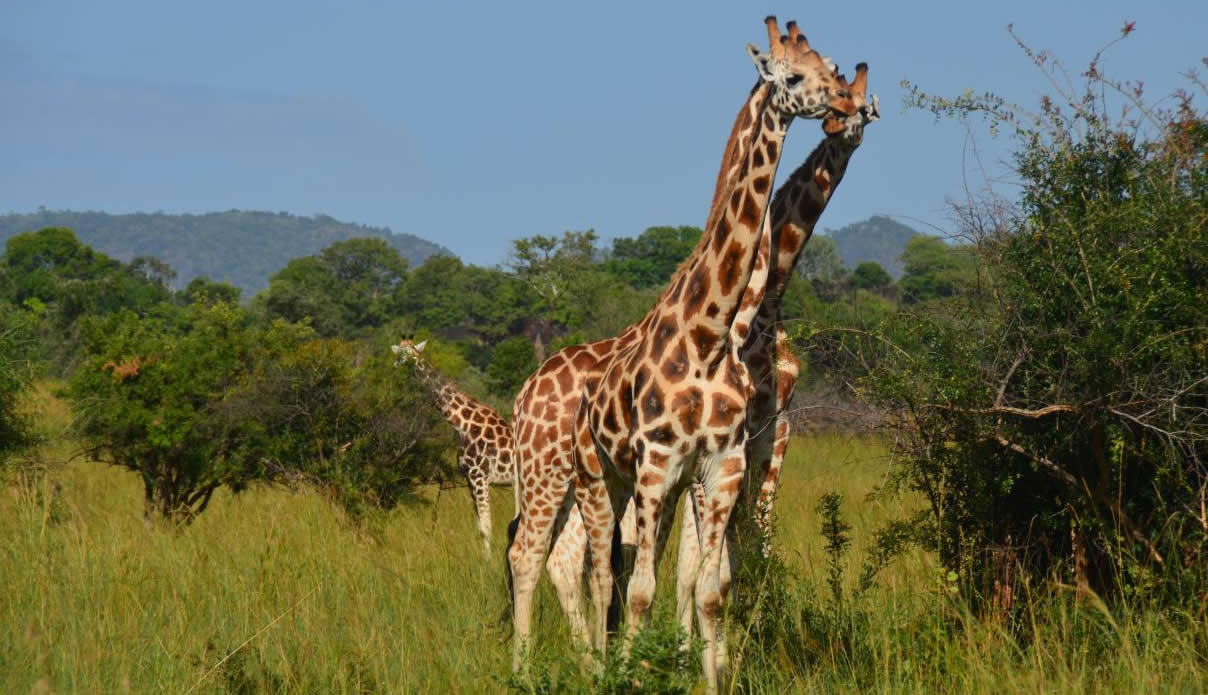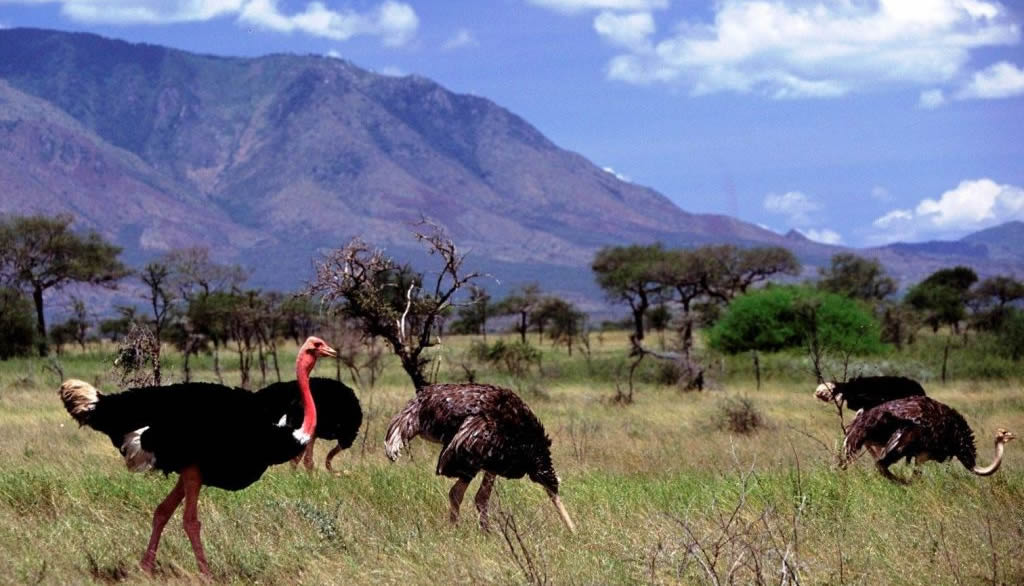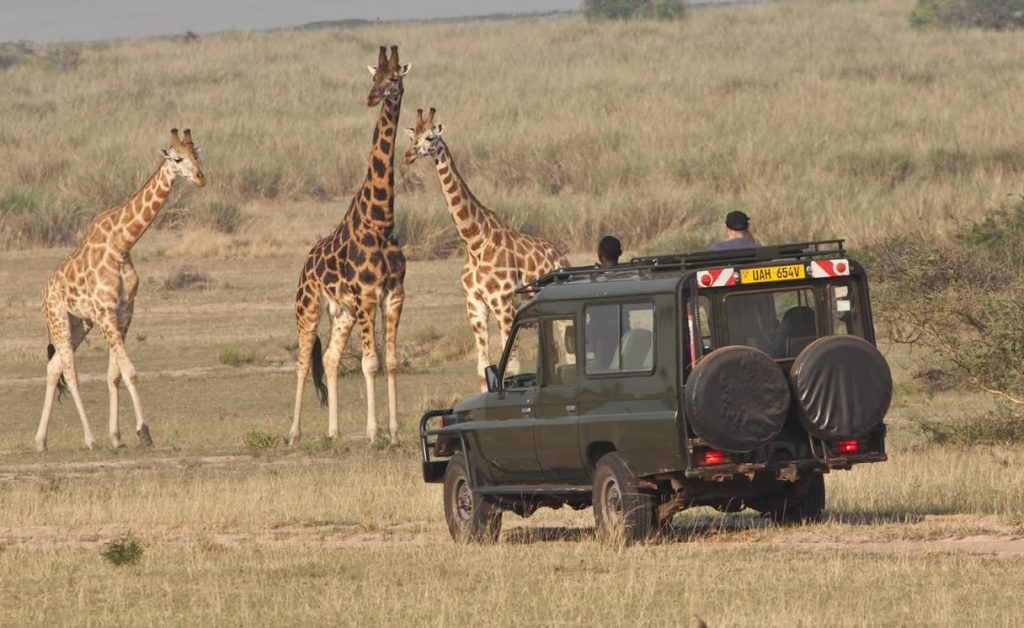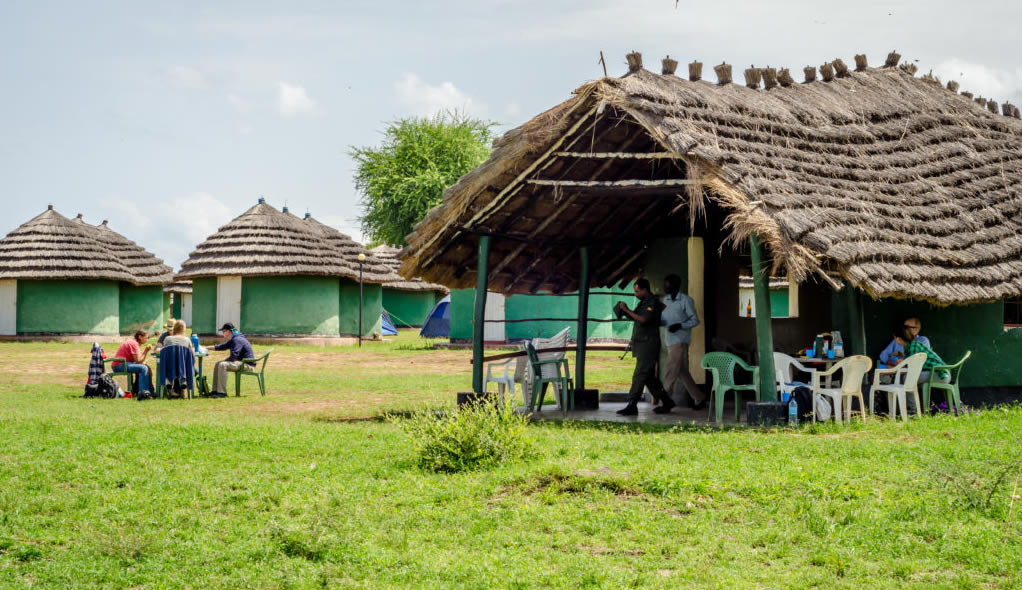Kidepo Valley National Park
A few areas in the world reward visitors with authentic African experiences like it is a case in the Kidepo Valley National Park. This 1442 square kilometer national park is located in the rugged semi-arid Karamoja province valleys, just at the extreme Northeastern side of Uganda at the border between South Sudan and Kenya.
 Kidepo Valley National Park is one of the remotest destinations in Uganda and yet offers the most stunning sceneries not fully explored. If you are interested in the most splendid savanna landscapes, then a safari to Kidepo Valley National Park worth undertaking while on your vacation in Africa. The park features vast latitudinal range which comes with wide range of climatic conditions which have evolved extremely diverse vegetation.
Kidepo Valley National Park is one of the remotest destinations in Uganda and yet offers the most stunning sceneries not fully explored. If you are interested in the most splendid savanna landscapes, then a safari to Kidepo Valley National Park worth undertaking while on your vacation in Africa. The park features vast latitudinal range which comes with wide range of climatic conditions which have evolved extremely diverse vegetation.
As a result, today vast numbers of wildlife species thrive in this protected area with majority that you may not find in any part of the country. Kidepo Valley National Park lies at altitude of about 914 to 2749 meters with its main habitats mainly comprising of the semi arid scrub, vast thorn scrub, thorn bush, long and short grass open tree savannas, riparian woodland that includes borassus and Kigelia woodland, thick Miombo like woodland, montane forest and granite out crops.
The park was established in 1954 mainly to offer refuge to its incredible tourist attractions. About 480 distinct bird species call Kidepo Valley National Park there home and this ranks it the second to Queen Elizabeth National Park with the largest number of bird species in Uganda. The uncommonly spotted and the most sought after bird species in the park include the Karamoja apalis and the black breasted barbet and many others.
Tourist Activities in Kidepo Valley National Park
-
Birding
 With over 480 bird species, Kidepo Valley National Park is undeniably one of Uganda’s birding paradises that shouldn’t miss out on your bucket list. The park offers birders with lifetime experiences especially with its countless rarest avian species that are readily available for visitors to explore. The Apoka Rest Camp and the park headquarters that over view the shallow, southern Narus valley feature as the best birding sites for bird lovers to achieve their dreams while on safari in Uganda.
With over 480 bird species, Kidepo Valley National Park is undeniably one of Uganda’s birding paradises that shouldn’t miss out on your bucket list. The park offers birders with lifetime experiences especially with its countless rarest avian species that are readily available for visitors to explore. The Apoka Rest Camp and the park headquarters that over view the shallow, southern Narus valley feature as the best birding sites for bird lovers to achieve their dreams while on safari in Uganda.
The notable bird species for you to spot out at the park include silver birds, yellow billed shrikes, broad tailed warblers, Clapperton’s francolin, black coucal, marsh tchagra, crimson rumped waxbillood, African moustched, vinaceous dove, long tailed and standard winged nightjars, mosque swallow, scarlet chested sunbird, Rupell’s and super starlings, little weaver and red cheeked cordon bleu, white bellied and hartlaub’s bustards, eastern pale chanting go shawk, Nubian woodpecker, pygmy falcon, black headed plover, Abyssinian and Rufous crowned rollers, Abyssinian ground, four banded sand grouse, ostrich, red winged lark, African grey flycatcher, little green bee eater, white faced scoops owl, slate colored boubou, fan tailed raven, mouse colored penduline and many more. The park can be visited all the year round but for birding safaris, you can pay a visit from March to April.
-
Wildlife viewing
 Kidepo Valley National Park offers refuge to variety of wildlife species. Around 1971, approximately 80 mammal species were recorded at the park with 28 of them not found in any national park in Uganda. The rarest carnivore species in the park and karamoja area are the bat eared fox, striped hyenas, caracal, cheetah, hunting dog and aardwolf. However, due to severe poaching especially around Amin’s time, the park is still recovering its impact that claimed large herds of wildlife species. While on game drive along the savanna grassland of Kidepo Valley National Park, never miss to spot out most of the wildlife species like the Rothschild giraffes, cape buffaloes, elands, elephants, bush pig, Jackson’s hartebeests, waterbuck, leopards, lion, spotted hyenas, black backed jackal, side striped jackal as well as its 5 rare primates like the endemic kavirondo bush baby and others.
Kidepo Valley National Park offers refuge to variety of wildlife species. Around 1971, approximately 80 mammal species were recorded at the park with 28 of them not found in any national park in Uganda. The rarest carnivore species in the park and karamoja area are the bat eared fox, striped hyenas, caracal, cheetah, hunting dog and aardwolf. However, due to severe poaching especially around Amin’s time, the park is still recovering its impact that claimed large herds of wildlife species. While on game drive along the savanna grassland of Kidepo Valley National Park, never miss to spot out most of the wildlife species like the Rothschild giraffes, cape buffaloes, elands, elephants, bush pig, Jackson’s hartebeests, waterbuck, leopards, lion, spotted hyenas, black backed jackal, side striped jackal as well as its 5 rare primates like the endemic kavirondo bush baby and others.
-
Hiking
Hiking experiences are normally conducted just a few kilometers off the park headquarters along Mount Lamoj. The stunning Kidepo River Valley mainly features the Borassus palm forest and can easily be sighted by visitors. The park’s wide flat bed is dry and its valley is also situated along the Kanangorok hot springs. Its mountain and savanna landscape, the Narus valley located in the southwest of the protected area feature among its most remarkable tourist attractions. This is divided by the Natira and Lokayot hills from the Kidepo Valley in the northeast. The Lotukei Mountains, South of Sudan mark north and the southern boundary of the protected area, as well as the Morungole ranges where we find the endangered Ik tribe.
-
Picnicking
Kidepo Valley National Park is also an incredible area for picnic tours especially its river site that is situated along the sand and the sound of palm leaves that come in constant motion as blown by the wind reward visitors with the most thrilling experiences.
-
Cultural encounters
After wildlife viewing, you can also pay a visit to one of the nearby local communities to enjoy the exciting and interesting cultural and traditional dances, music of the Karamojong people and explore more about the traditional practices of the local residents. You can combine this with nature walk where you will visit one of the manyatta villages, to learn more about the Karamojong customs and traditions.
Accommodation in Kidepo Valley National Park
 For visitors on safari to Kidepo Valley National Park, the notable accommodation facility for you to spend your overnight stay can be in the Apoka Rest Camp/Lodge, Kidepo Savannah Resort, Buffalo Base Hotel and Ng’a Moru Wilderness Camp. The other option is camping you will need to come along with your own camping gear. Also there are some budget hotels in Kitgum Town.
For visitors on safari to Kidepo Valley National Park, the notable accommodation facility for you to spend your overnight stay can be in the Apoka Rest Camp/Lodge, Kidepo Savannah Resort, Buffalo Base Hotel and Ng’a Moru Wilderness Camp. The other option is camping you will need to come along with your own camping gear. Also there are some budget hotels in Kitgum Town.
How to get to Kidepo Valley National Park?
By Road: Kidepo Valley National Park requires the whole day for you to drive from Kampala. It can be reached from Kampala to Lira, Kotido then Kidepo and this is approximately 705 kilometers drive; from Kampala through Mbale to Soroti then to Moroto and finally Kidepo about 792 kilometers; From Kampala through Mbale to Sironko then to Kotido and finally Kidepo National Park about 740 kilometers drive. The most common route is Kampala, Gulu, Kitgum to Kidepo National Park. Visitors are advised to use a 4×4 safari Vehicles so as to navigate through the remotest routes that lead up to the park.
By air, you can fly from Entebbe International Airport or Kajjansi Airstrip to airstrip at Lomej approximately three kilometers south of Kidepo Valley National Park headquarters.
If you are interested in wilderness experiences while on safari in Africa then consider Kidepo Valley National Park a must for you to visit. The park can be visited at anytime of the year!

